How John Singer Sargent still inspires fashion to this day
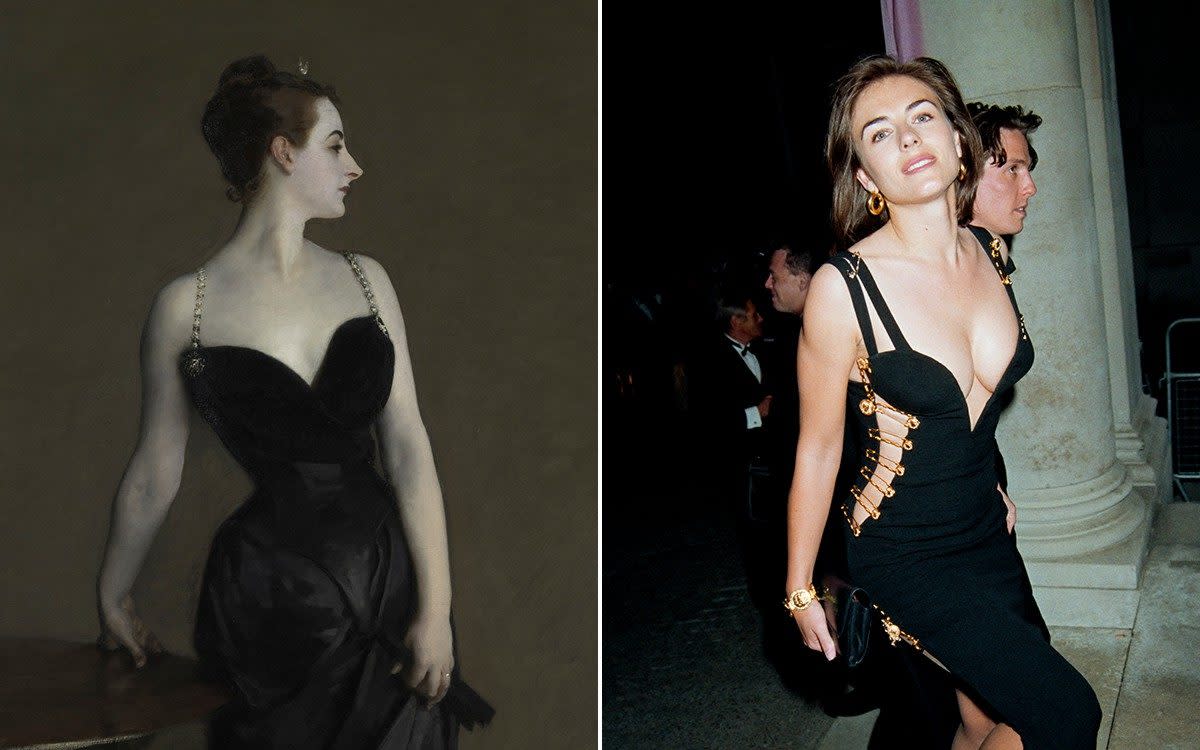
- Oops!Something went wrong.Please try again later.
- Oops!Something went wrong.Please try again later.
There couldn’t be two more fertile sources of fashion inspiration than John Singer Sargent’s eternally relevant pin-ups, Madame X (1884) and Dr Pozzi at Home (1881). They burlesque gender into elemental opposites: she is cool and marmoreal, while he is aflame in cardinal red. She is crowned like the goddess Diana, with a dainty aigrette in the shape of a lunar crescent; his heavy red dressing-gown cord hangs, as Julian Barnes has noted, ‘like a scarlet bull’s pizzle’. He is looking; she is being looked at.
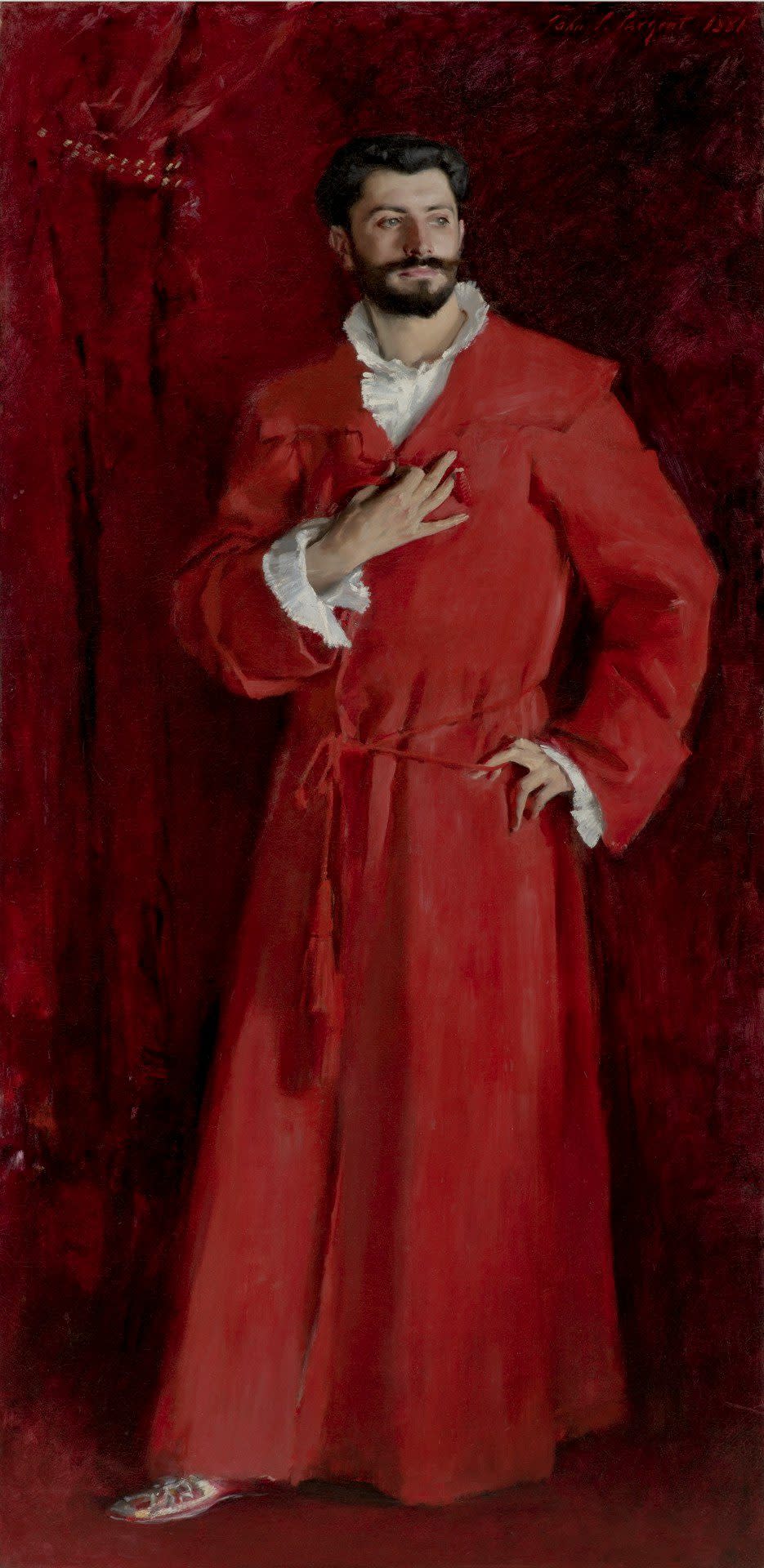
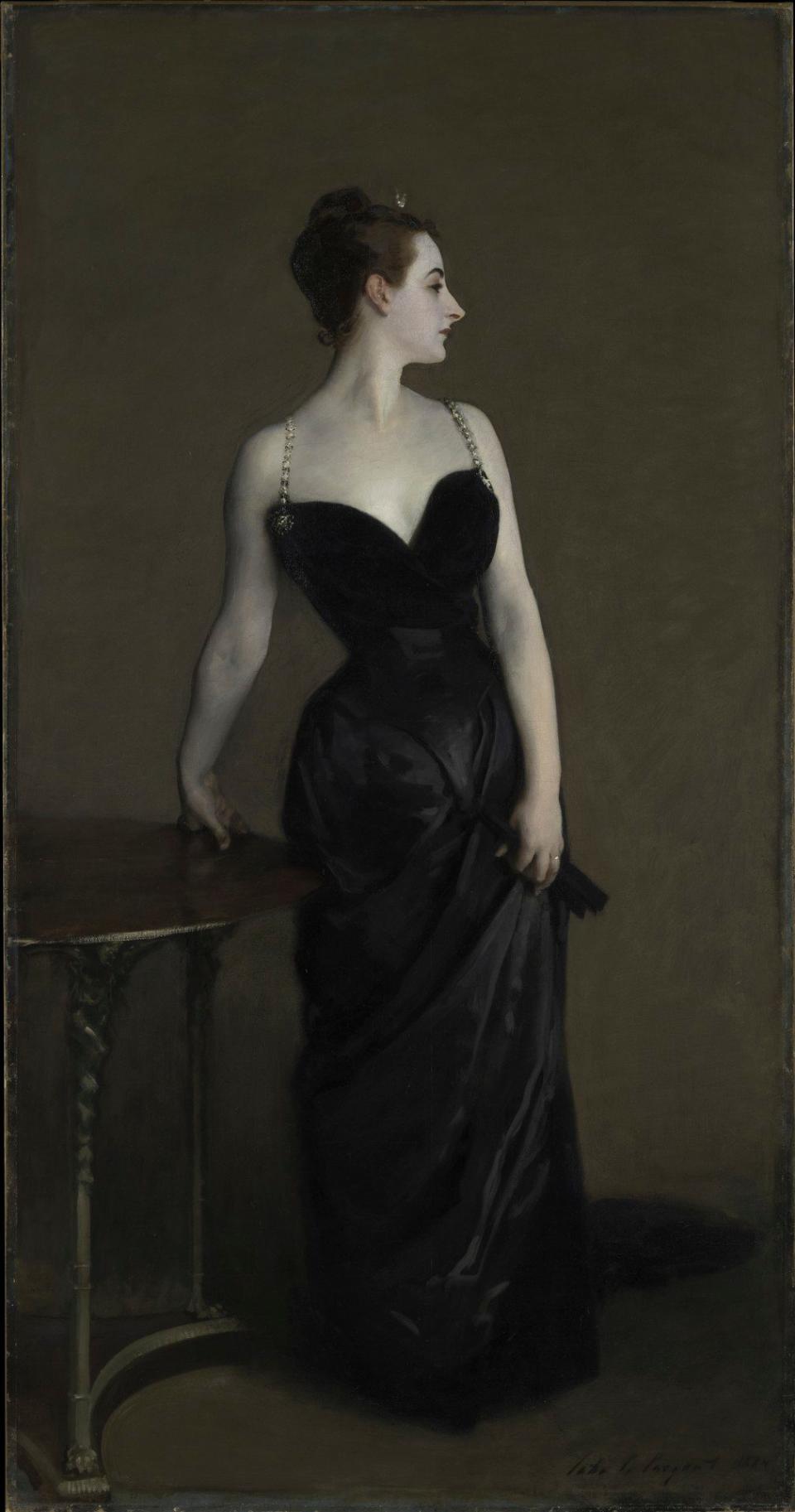
They are the archetypal feminine and masculine, to be argued with, referenced and revised by every generation – Liz Hurley’s Versace showstopper put a punk twist on the black heart-shaped bodice in 1994, while Charlize Theron perfected the dropped shoulder strap in Dior for the Oscars in 2020.
The current mood of spring/summer 2024 sees a renewal of interest in silk satin, chiffon and corsetry, as well as a reclamation of Gilded Age tropes as inclusive and gender fluid, with men in cuirasses and plus-size models in floor-length black velvet, as showcased at Wiederhoeft’s Night Terror at the Opera show, and by Harris Reed for Nina Ricci. Dr Pozzi’s flowing gown and frilly collar would look a treat on Harry Styles.
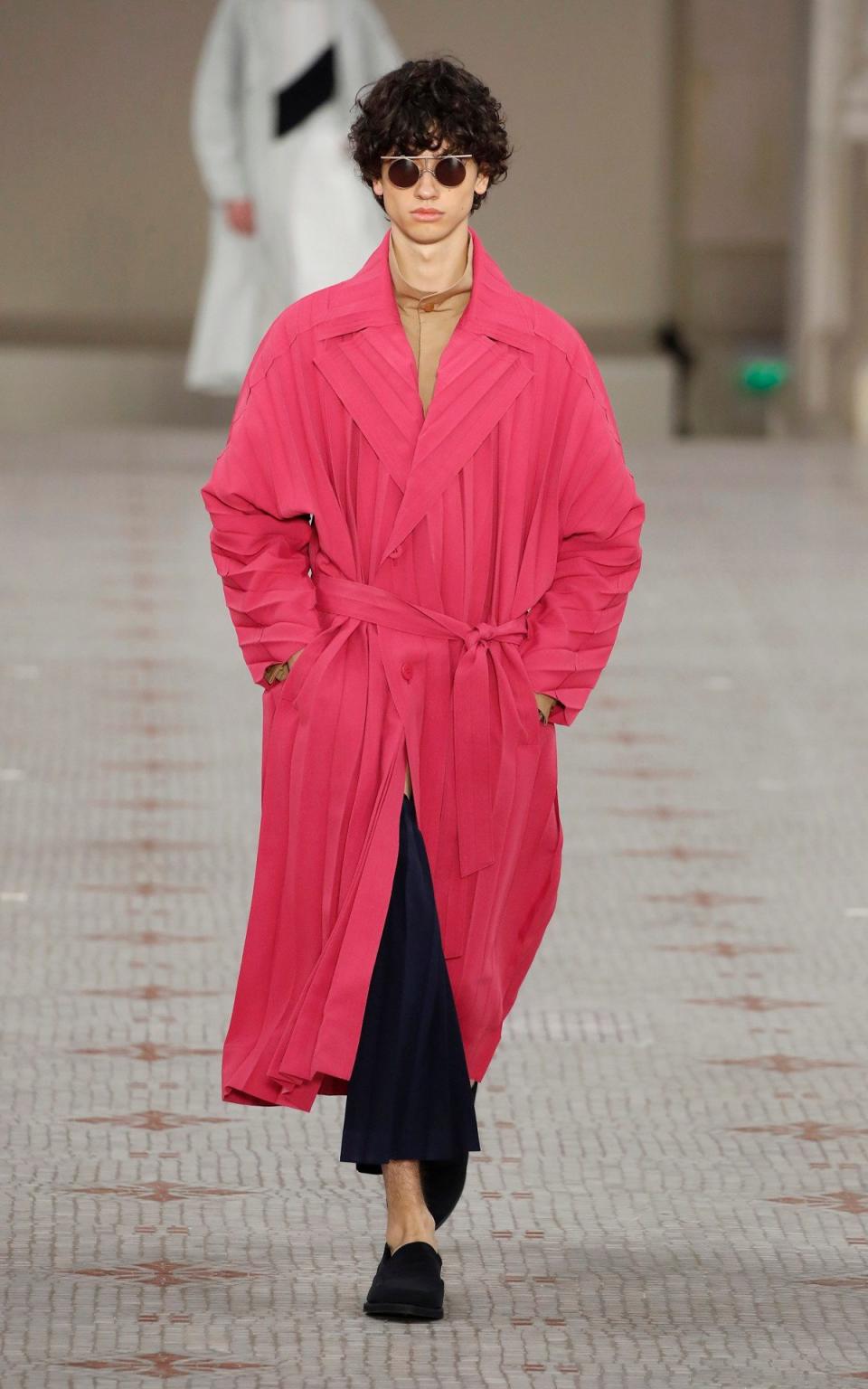

Madame X and Dr Pozzi usually live on opposite sides of America, he in the Hammer Museum in Los Angeles, she at the Met in New York, but they are to be united briefly in London at Tate Britain for Sargent and Fashion, a landmark exhibition produced through monumental international cooperation. It is an unabashed celebration of the importance of colour, cut and fabric. There are swatches, period gowns and original costumes on display – and even Sargent’s own Kashmiri paisley shawl, which he painted often.
I previewed the show when it opened last year at the Museum of Fine Arts Boston; the British iteration of the show will include extra treats such as his English idyll Carnation, Lily, Lily, Rose (in the Tate collection and too fragile to travel across the pond), as well as part of the glittering diamond insignia of the Order of the Garter, worn by the 6th Marquess of Londonderry at the coronation of Edward VII in 1902.
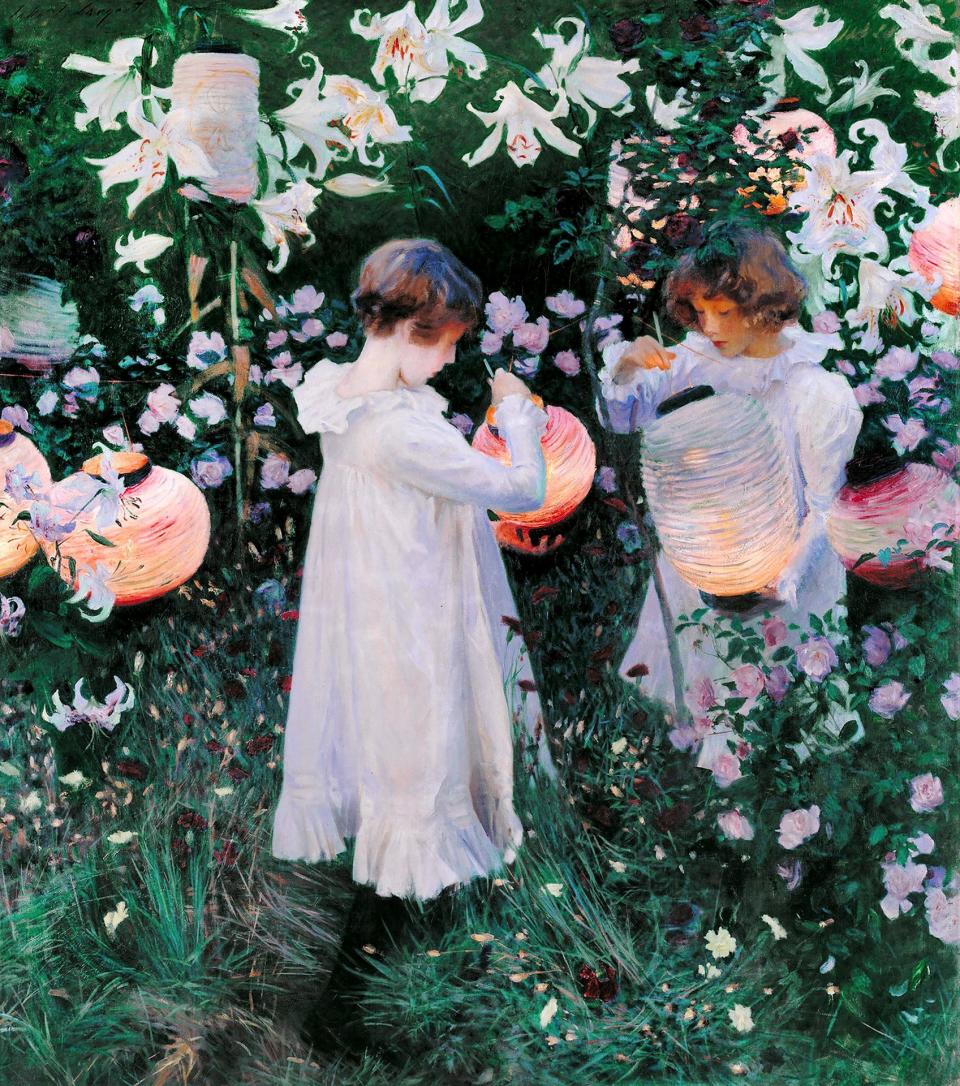
Sargent commemorated Londonderry raising aloft the Great Sword of State, a look that won Penny Mordaunt so much attention last year. There will be the chance to inspect, under glass, the original pale blue ribbon with honi soit qui mal y pense picked out in diamonds, which was tied, just so, beneath the 6th Marquess’s knee, and is on loan from the current Marquess – alpha-male bling at its most venerable.
‘We are anticipating people may want to visit the exhibition dressed in Sargent-inspired clothes, as they did in Boston,’ said a Tate contact. Instagram reveals a treasury of references, such as Billie Eilish going to the Met Gala in Oscar de la Renta’s pitch-perfect interpretation of Sargent style, with gloves, corsage, choker and bodice that made her the spit of Madame Paul Poirson (1885). The modern twist was sustainability, with all the fabric made of ‘existing materials’ rather than the ‘yards and yards of satin from the most expensive shops’ that Sargent ostentatiously used, according to DH Lawrence.
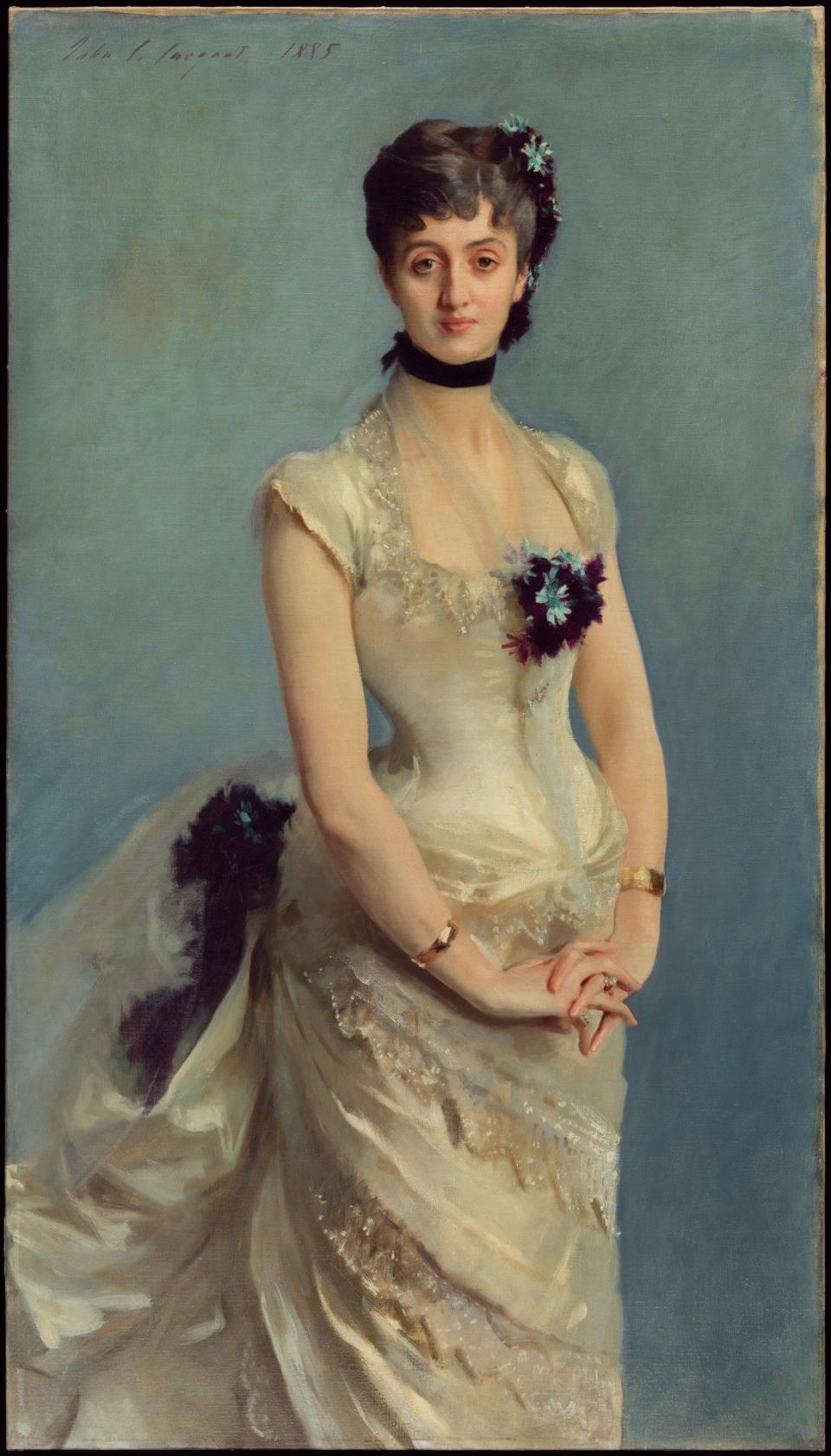
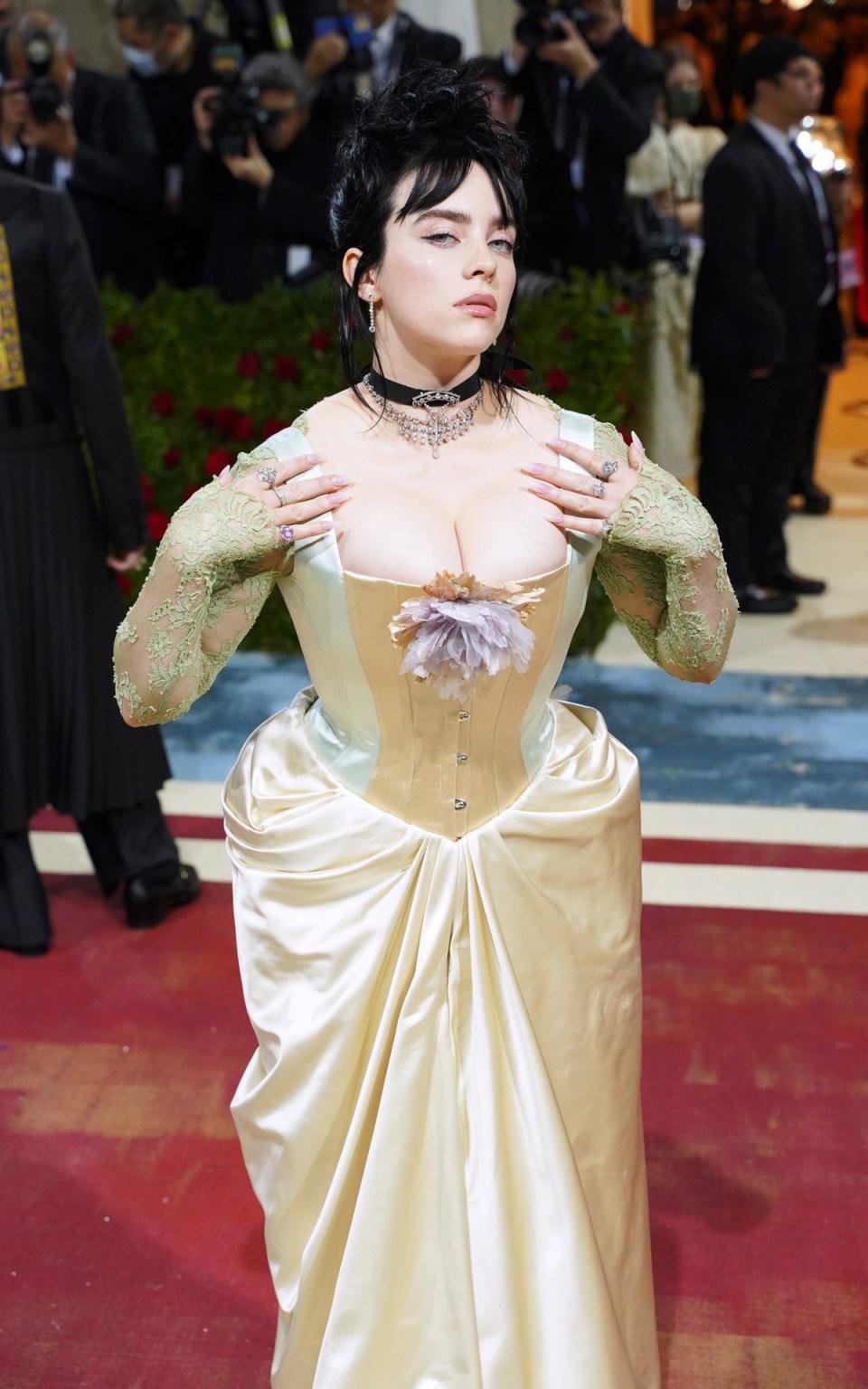
HBO’s The Gilded Age by Julian Fellowes has helped foster a new following for Sargent, its costumes drawn from authentic period looks; in the new season, recently aired, lead actor Carrie Coon wears a reproduction of the famous fuchsia silk-velvet gown of Mrs Hugh Hammersley (Mary Frances Grant) (1893).
Tate Britain curator James Finch told me it divided critics when the painting premiered because bright synthetic dyes such as aniline had just taken off, placing the vibrant cherry red dangerously close to the fast fashion of its day and causing some sucking of teeth by a writer in The Times, who judged it almost, but not quite, ghastly: ‘red mauve, only one shade removed from something aniline and terrible, but that shade all-important’. One can judge for oneself at the Tate’s show, where a precious swatch from the original gown will be on display beside the painting.
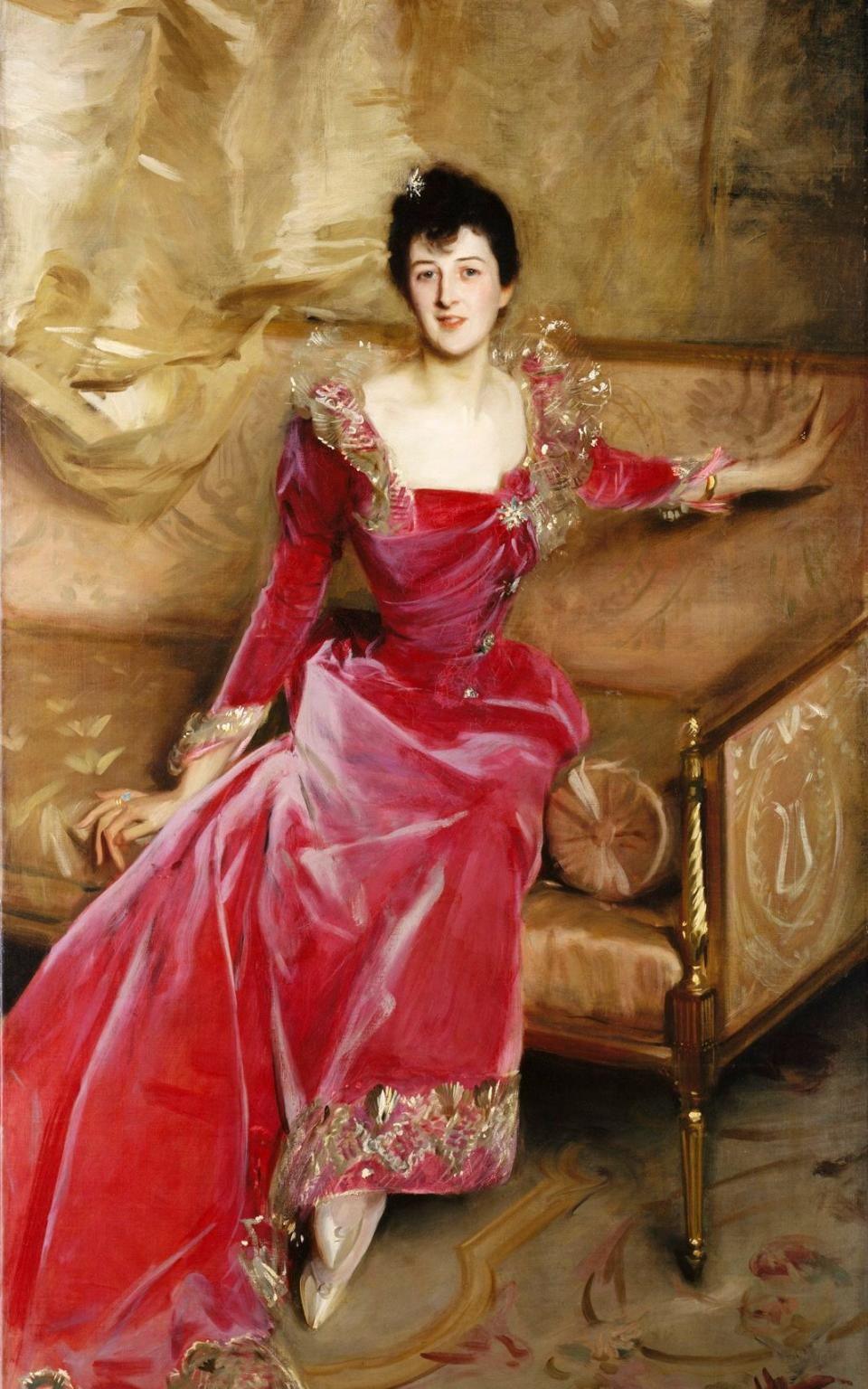

‘Professional beauty’ Amélie Gautreau lived and died by fashion’s sword. On display in London for the first time since 2006, her portrait radiates sexual charisma. Officially known as Portrait de Madame XXX when it was first displayed in 1884, one can see why it was such a succès de scandale at the Paris Salon. One critic noted censoriously that ‘the corset flees the flesh’.
What they (possibly) didn’t dare add was that her jet-black fan points precisely to the lowest point of her bodice, the V-shaped cleft. Working in the tradition of Rubens, van Dyck and Hals, Sargent pays subtle attention to the change in fabric here, where black velvet becomes black satin.
‘You can always tell what cloth it is that Sargent is painting,’ MFA curator Erica Hirshler sighed appreciatively over my shoulder as we looked at the painting together. ‘He had studied Frans Hals and the masters in their handling of black-on-black.’ Gautreau seems to breathe, life-size, a Galatea in paint, aware we are looking at her. Her position is a classical contrapposto, but her infamous shoulder straps strike me as very modern – nice pieces of hardware, like the chains on a Chanel bag.
Virginie Amélie Avegno, who was known as Amélie, was a New Orleans plantation heiress married to Pierre Gautreau, a French banker twice her age who had made a large fortune importing guano. She was a social sensation: Ludwig II of Bavaria attended the Paris Opéra ‘with the sole purpose of witnessing Amélie’s entrance up the grand staircase’, according to biographer Deborah Davis; Elisabeth of Austria asked to meet her and invited her to pose among the statues in her garden in Corfu.
This was all before Amélie sat for Sargent. Newspapers speculated about how she maintained her ethereal skin tone – maybe she took an arsenic pill every day? We know from her mother-in-law’s itemised accounts that she used a lot of poudre de riz. When she summered at Saint-Malo, the papers asked if her pallor would come off when she swam. It was said that she rouged the tips of her ears.
Sargent looked through her wardrobe and chose the timeless black gown, made by a couturier, Félix, on the Rue du Faubourg Saint-Honoré. Amélie was a terrible sitter, even when Sargent pursued her to her country estate. He wrote despairingly of ‘the unpaintable beauty and hopeless laziness of Madame Gautreau’.
He persevered relentlessly, though, with sketches and preparatory studies that lasted a year. He tried so hard on the final painting, he feared he had spoilt it by going over it so many times, and began a new copy, which is in the Tate collection, unfinished. When the original was complete, he and Amélie considered it a masterpiece. But the critics’ response was cruel: it was called ‘spineless’ and ‘vulgar’.
The American-born Sargent had gone too far in depicting this American-born woman as a Parisienne, with one strap sluttishly slipping from her shoulder. He was approached on the day the painting debuted by a weeping Amélie and her mother, begging him to repaint, to raise the shaming fallen strap. Sargent agreed to do so, but had to wait until the end of the exhibition. After all the stress and rancour, Sargent left Paris for good.
The making of an icon seems to necessitate the breaking of hearts: when Harry Styles appeared in a US Vogue cover shoot in a hooped skirt and suit-top designed by Harris Reed, there was a similar outcry. Like Sargent, Reed had to live with the political consequences of his style statement, which sparked calls for men to be men. Sargent’s outlook was liberal – he painted suffragists and defiantly decadent dandies (I am pretty sure Sir Philip Sassoon (1923) is wearing make-up).
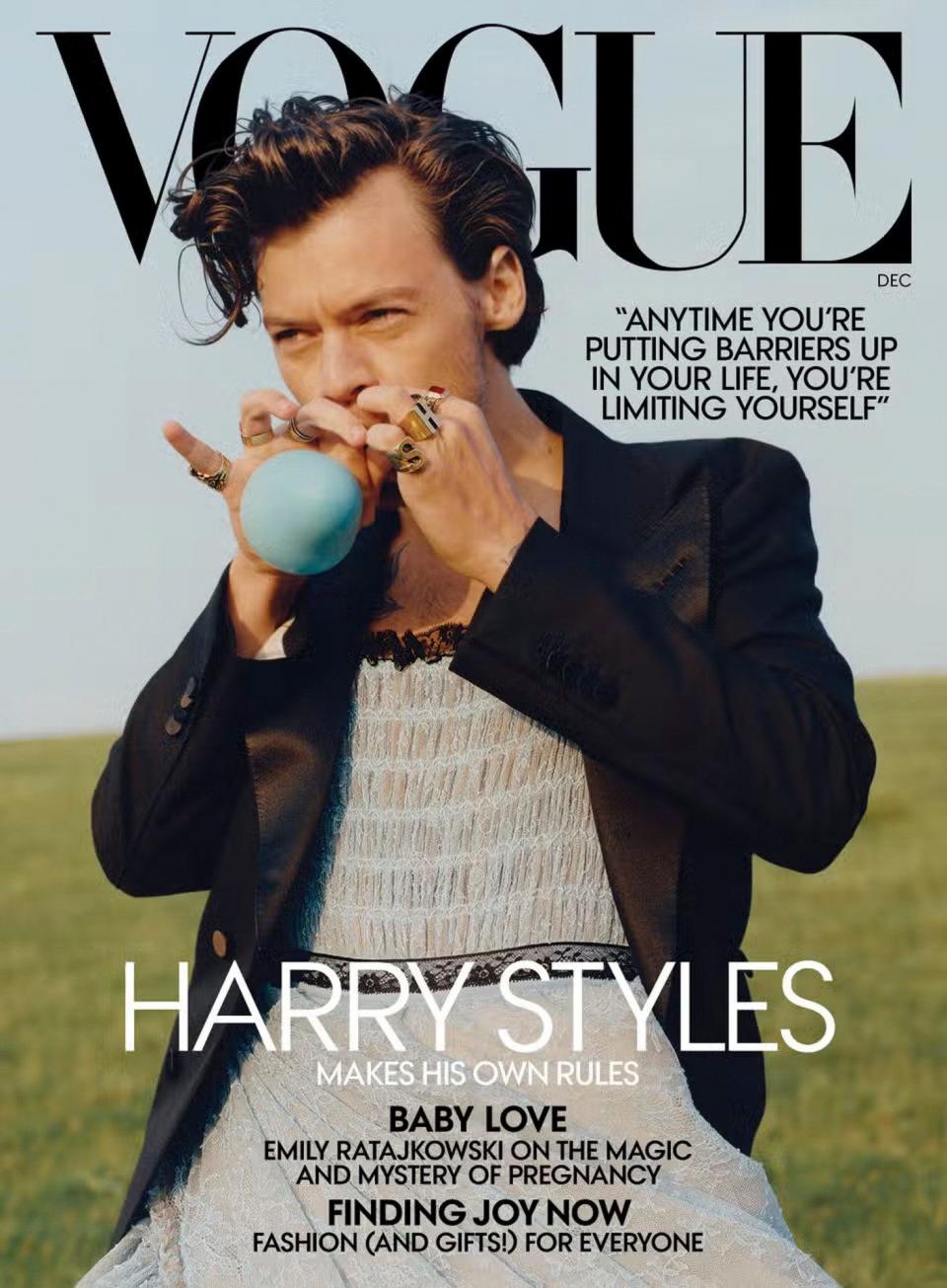
Like the gender-fluid designers of today, Sargent knew how to light a touch paper with an accessory, such as the jade-topped cane of elegant young man about town W Graham Robertson, painted in 1894 and showing the influence of Oscar Wilde, Sargent’s neighbour on Tite Street in Chelsea. Clothes in Sargent’s work are always significant. When Robertson asked if he could remove the heavy tailored coat that Sargent had put him in (it was summer), Sargent responded with a resounding no, saying, ‘The coat is the picture!’
Sargent lived at a time when the Rational Dress Society was campaigning against crinolines and hoops. In Miss Elsie Palmer (1890), he shows us a young girl with an aura just like that of a teenager today, even if her clothes resemble a Kate Greenaway illustration – gathered white satin waisted with an informal sash. She was lounging in loose fabric rather than anything structured or inhibiting. Even more unusually, her hair was not tied back but cut in a full fringe. It was a decidedly odd style for the time, a liberal arts floaty look that now reads as timeless. Sargent’s vision was fluid and fresh; he was far from a slavish follower of fashion.
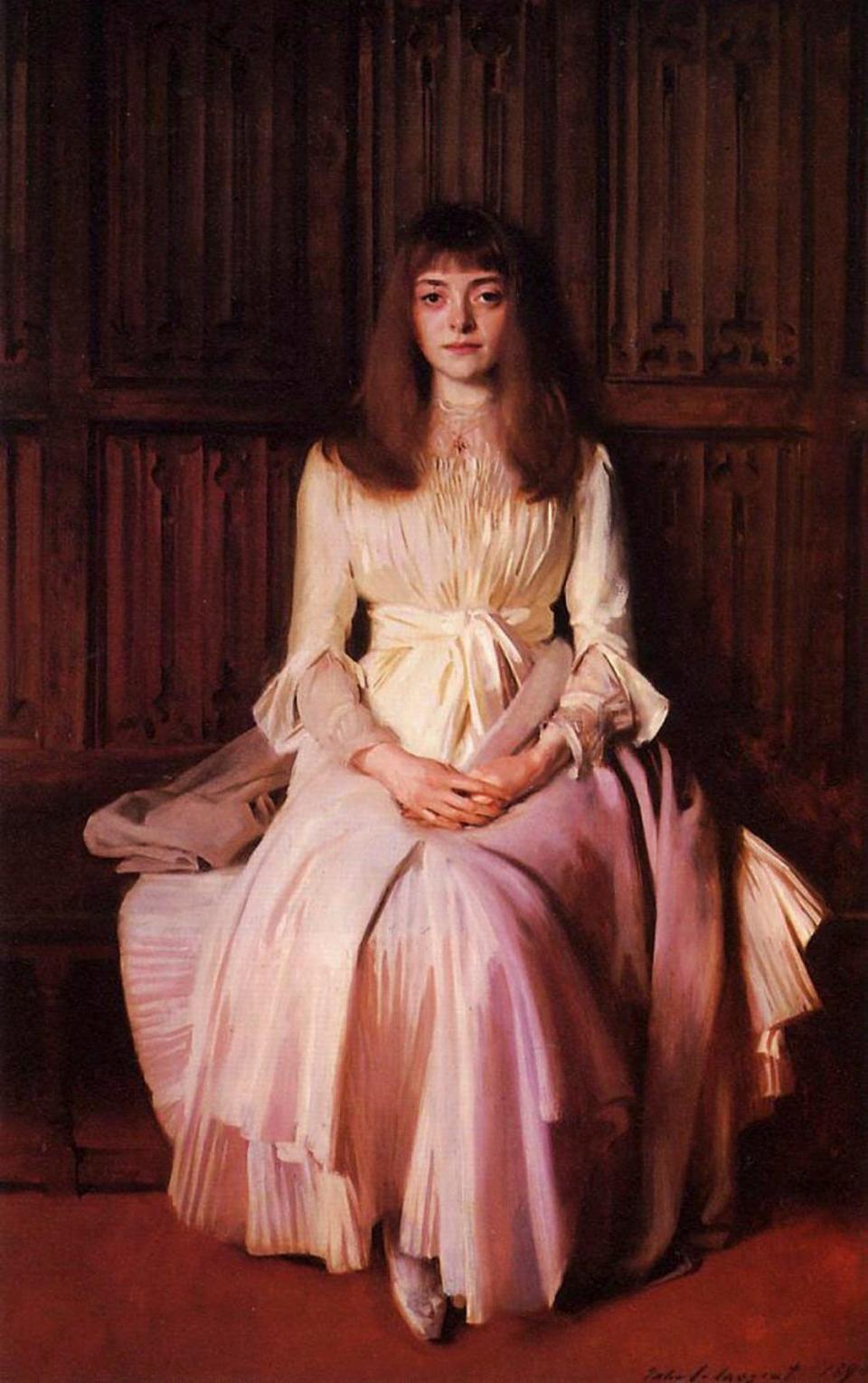
Sargent’s virtuoso rendering of sweetly disordered dress chimes with today’s creatives. On a fashion shoot for W Magazine, Tim Walker and Tilda Swinton, together with her daughter, Honor Swinton Byrne, recently recreated his plein air painting of ladies tumbled on a lawn, all foreshortened fabric and white summer snowdrifts of cotton (Two Girls in White Dresses, 1911).
Legendary costumier Sandy Powell created this look of dreamily decorous romanticism using an embellished dress by Richard Quinn, a voluminous ballgown by Chenpeng, hooped skirts by Christopher John Rogers, and wide-brimmed hats by Sean Barrett. In a nod to Sargent’s formal portraits of male dress, Swinton’s son, Xavier, posed in the ceremonial uniform of the Lord Lyon King of Arms, a family heirloom. Swinton, whose great-grandmother Elsie Swinton was painted by Sargent, said she felt she and her children were ‘stepping into and moving through shapes made by our ancestors’.
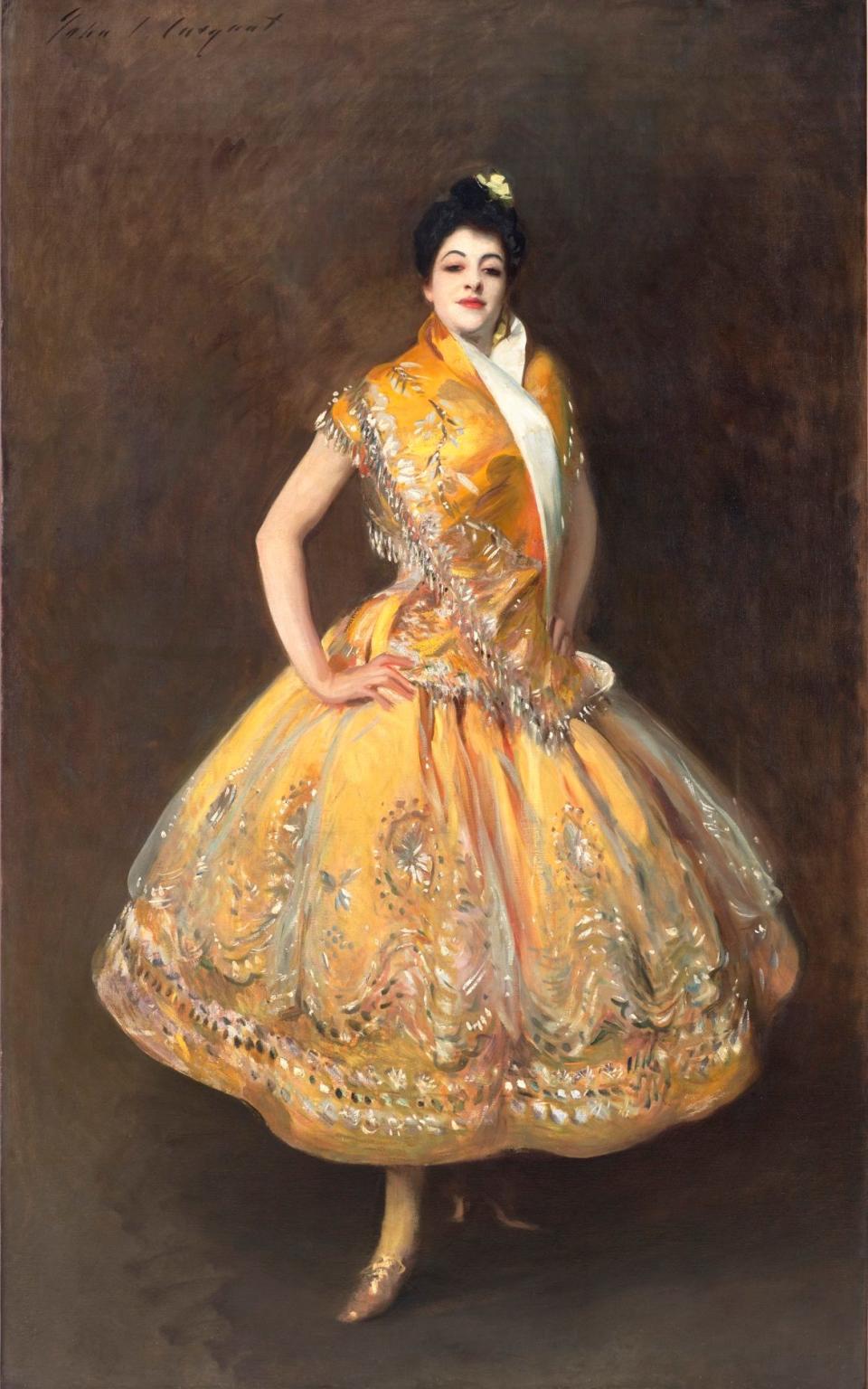
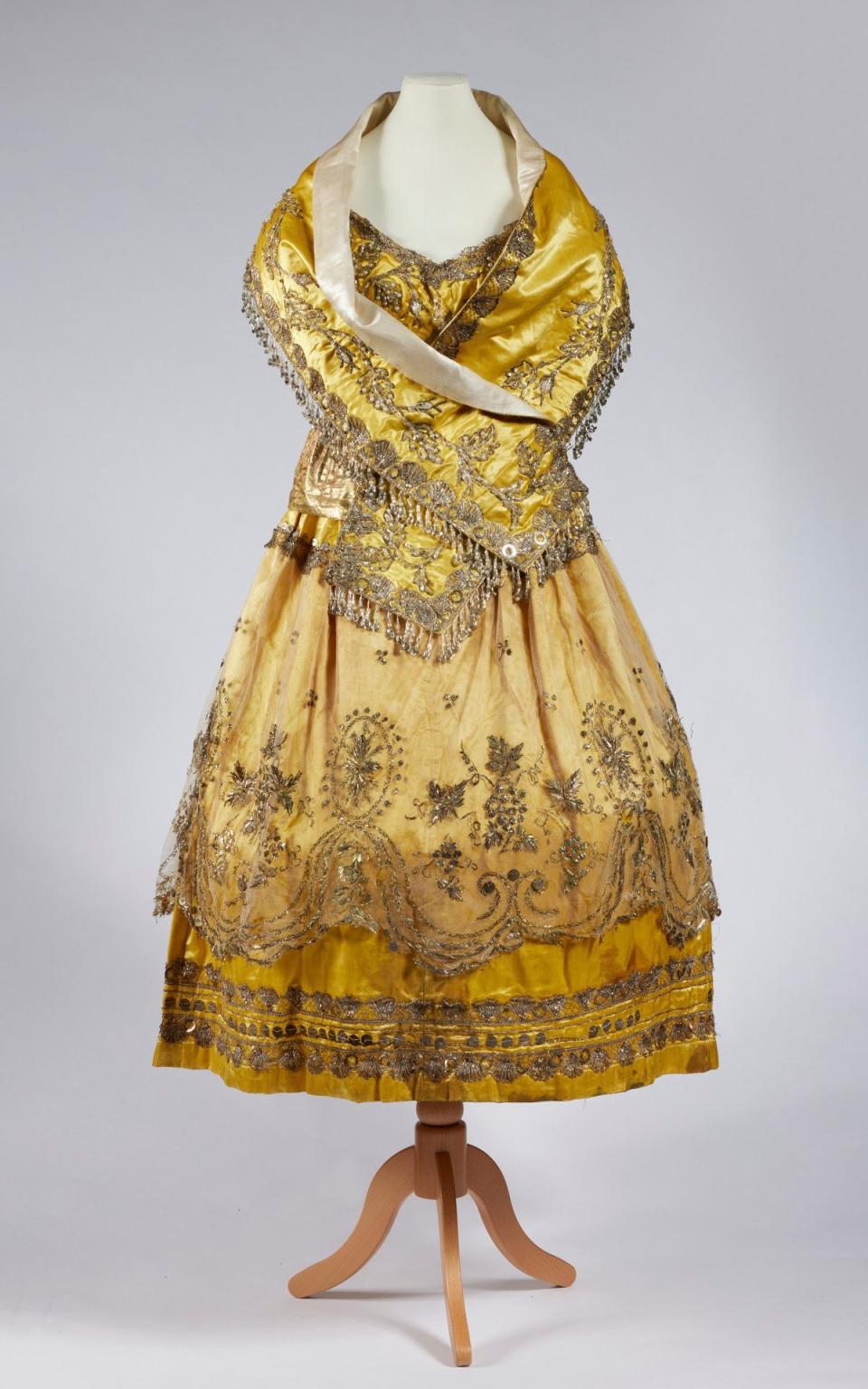
Sargent never married; he guarded his own sexuality closely. Scholars have posited that he was literally the chaperon or alibi for Amélie Gautreau and Samuel-Jean Pozzi, who used to meet at his studio. Although they were both married, there is compelling evidence deciphered from scraps of correspondence that they were having an affair: the paintings seem to confirm this, casting them as opposites that attract, Mars and the Moon goddess.
Jean-Samuel Pozzi was a prominent doctor and gynaecologist, a supporter of women’s health who pioneered the use of antiseptics. He was also an aesthete, a friend of Proust, and a great lover, known for his many affairs including with Sarah Bernhardt. Julian Barnes, who wrote the book The Man in the Red Coat about him, noted he was nicknamed L’Amour Médecin: Dr Love. In 1917 he was fatally shot by a former patient who believed Pozzi’s surgery had rendered him impotent.
Pozzi was clearly comfortable enough in his sexuality to be painted without any of the usual trappings of masculinity. A frilly white shirt and Turkish slippers offset his blood-red robes. He is today an icon of liberty, but to the Royal Academy in 1880 he was ‘gaudy’ and ‘decadent’. The vermilion referenced either the medical profession’s official colour, or the flames of hell fire, depending on your point of view.
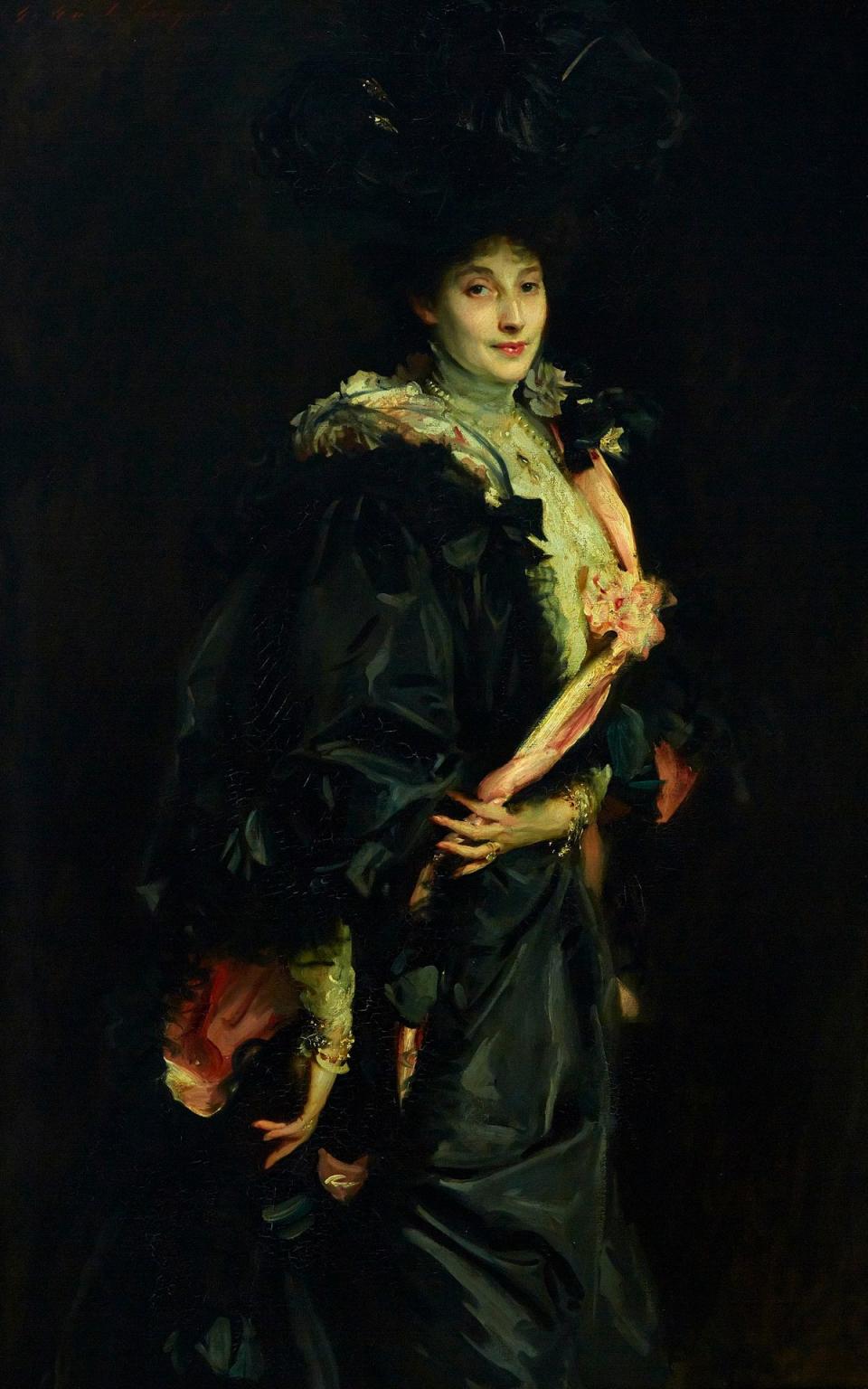
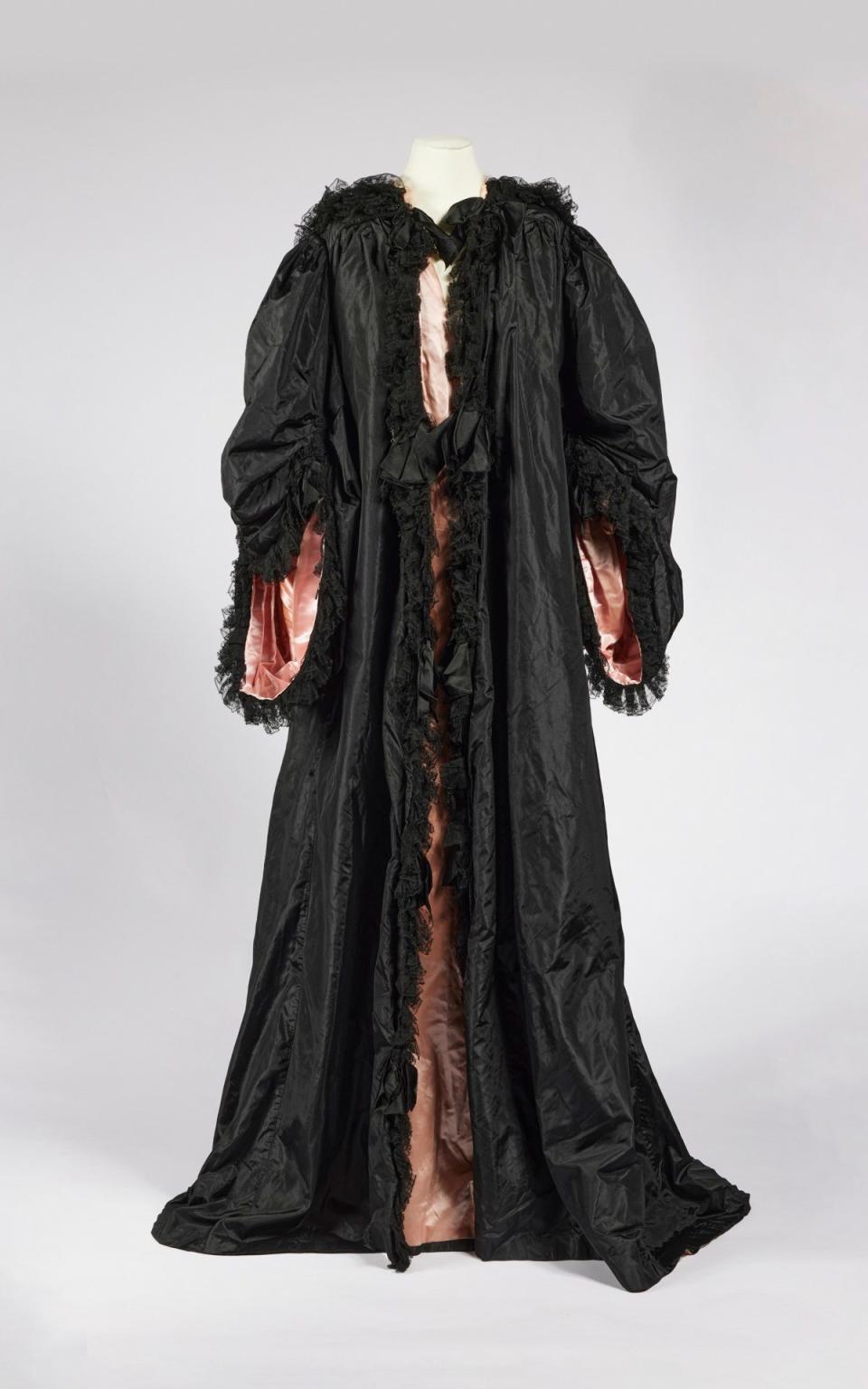
Caught looking between Pozzi and Madame X, we become voyeurs, Freud’s children fascinated by the parental dynamic. Sargent was, possibly, curious about, but ultimately left cold by, the mysteries of heterosexual love. He destroyed a great part of his own letters and papers, but he left sketchbooks of male nudes full of intimacy and expertise.
By 1907 he had painted approximately 550 portraits. He was done. ‘I abhor and abjure them,’ he wrote of his last attempts. ‘I hope never to do another, especially of the upper classes.’ ‘No more mugs,’ he declared.
He became consumed by vast schemes of symbolist and theological murals, travelling widely in the Middle East in preparation for them and executing them over the last years of his life in his adopted home of Boston, Massachusetts. No more chiffon, no more jewels – well, only a few appliqué ones on his rendering of the pagan goddess Astarte, in the panels depicting the origins of religion at the Boston Public Library.
Sargent’s psychological insight and stylish instincts shone very brightly, yet portraiture was not a lasting love for him. It is perhaps this very ambivalence to fashion that makes his portraits so compelling, because, as we all know, it is important not to look as though you’re trying.
Sargent and Fashion is at Tate Britain, London SW1, 22 February-7 July 2024

